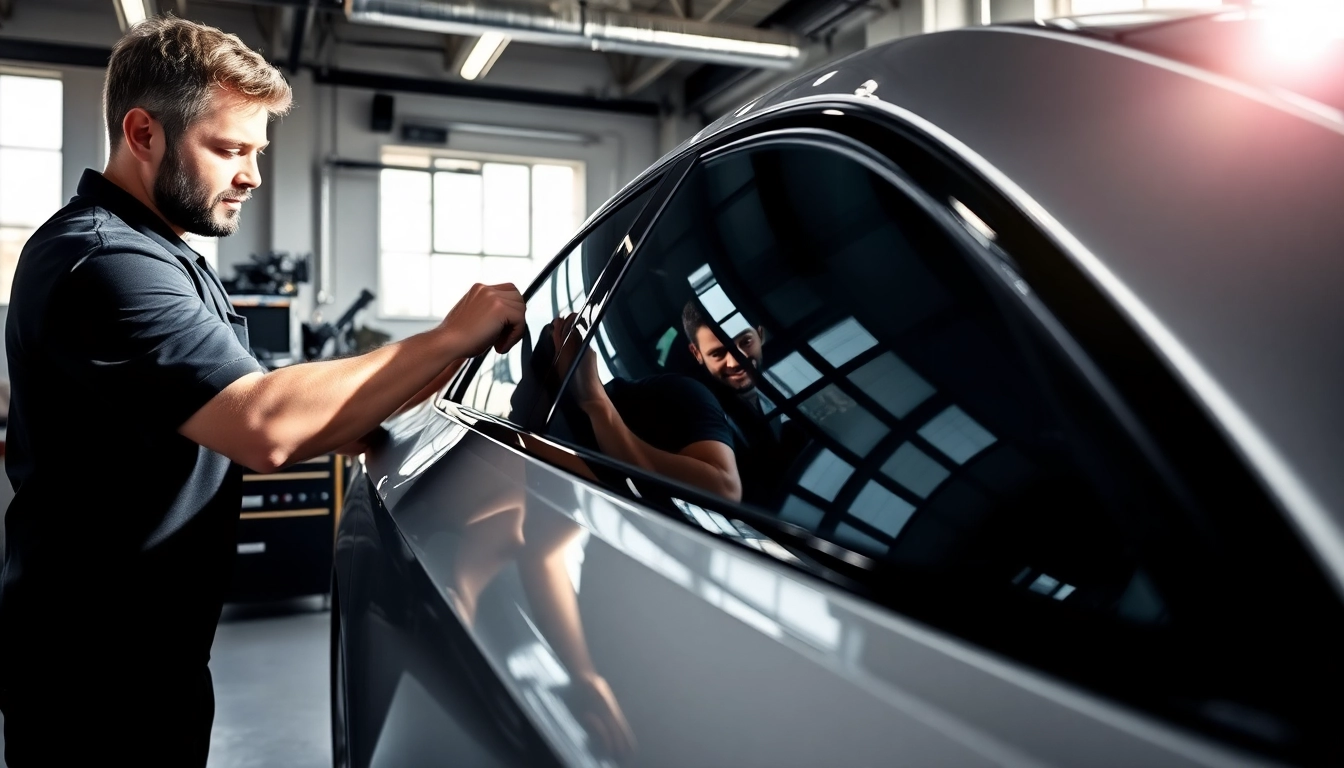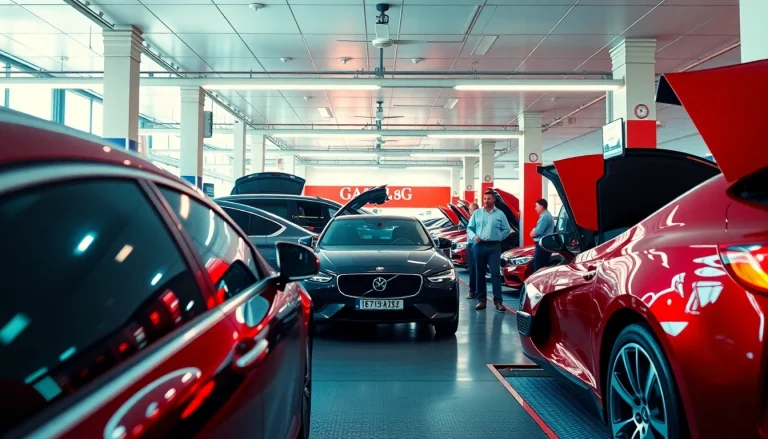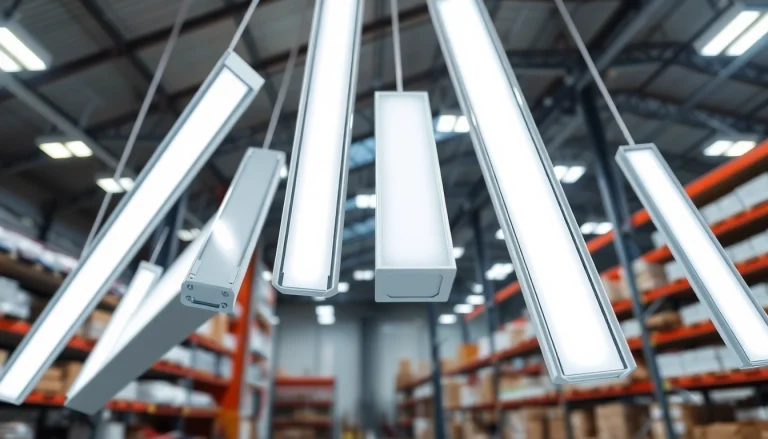
Understanding Car Window Tinting
What is Car Window Tinting?
Car window tinting is the process of applying a thin film of tinted material to the windows of a vehicle. This film can be made from various materials including dyed, metalized, or ceramic films, each offering varying degrees of heat rejection, UV protection, and privacy enhancement. The application is typically performed professionally to ensure a flawless finish that adheres to local regulations.
Benefits of Car Window Tinting
Investing in car window tinting comes with numerous benefits:
- UV Protection: Tinted windows block a substantial amount of harmful ultraviolet (UV) rays, which can harm the skin and cause premature aging.
- Heat Reduction: Tinting can significantly lower the amount of heat that enters your car, making driving more comfortable especially in warmer climates.
- Increased Privacy: Darker tints provide more privacy for passengers and belongings, deterring potential theft.
- Glare Reduction: Tints help to reduce glare from the sun and headlights, enhancing visibility on the road.
- Enhanced Aesthetic Appeal: Tinting can elevate the overall look of your vehicle, providing a sleek and sophisticated appearance.
Types of Car Window Tinting Films
There are several types of window tinting films available, each offering different benefits:
- Dyed Film: A basic option that provides privacy and can reduce glare but does not effectively block heat.
- Metalized Film: Contains metal particles that reflect heat and UV rays while enhancing privacy. However, it may interfere with electronic signals.
- Ceramic Film: The premium choice offering excellent heat and UV protection without interfering with signals, ideal for modern vehicles with numerous electronic gadgets.
- Hybrid Film: Combines dyed and metalized components for a balanced solution offering both heat rejection and minimal glare.
Choosing the Right Tint for Your Vehicle
Factors to Consider When Selecting Tint
Choosing the right window tint for your vehicle is crucial. Consider the following factors:
- Climate: If you live in a hot climate, opt for a film that offers higher heat rejection.
- Legal Regulations: Check state laws regarding permissible tint levels, as some states have strict regulations on tint darkness.
- Purpose: Assess your reasons for tinting, whether it’s for aesthetics, privacy, or UV protection.
Understanding Tint Percentages and Grip
Tints are often measured by the percentage of visible light transmission (VLT). A lower percentage means a darker tint. Here are common VLT levels and their implications:
- 20% VLT: Typically offers high privacy and glare reduction but may be illegal in certain states.
- 35% VLT: A popular choice balancing privacy and legal compliance in many areas.
- 50% VLT: Allows for significant light entry while still providing some UV protection.
Compliance with Local Laws and Regulations
Before applying window tint, familiarize yourself with local laws. Many states have regulations on the VLT percentage allowed, especially for the front windshield and driver’s side windows. Failing to comply can result in fines or the need to remove the tint.
The Car Window Tinting Process
Preparation Steps for Tinting
The preparation for window tinting typically includes the following steps:
- Cleaning the Windows: The windows must be thoroughly cleaned to remove dirt and grease for optimal adherence of the tint.
- Measuring: Precise measurements are taken to ensure the tint fits perfectly on each window.
- Choosing the Right Time: It is best to tint during mild weather conditions to ensure proper application and drying.
The Tinting Application Process
The application process generally follows these steps:
- Cutting the Film: The tint film is cut to match the size of each window based on previously taken measurements.
- Applying the Film: The film is carefully placed onto the glass, often using a solution to facilitate positioning and bubble removal.
- Smoothing the Film: A squeegee or similar tool is used to eliminate air bubbles and ensure full adherence to the glass surface.
Post-Tint Care and Maintenance
After tinting, proper care is essential to maintain its quality:
- Avoid Cleaning for a Few Days: It’s advisable to refrain from cleaning the windows for at least 48 hours to allow the adhesive to set fully.
- Use the Right Cleaning Products: Avoid ammonia-based cleaners which can degrade the tint. Use a soft cloth and mild soap solution instead.
- Inspect Regularly: Check for any bubbles or peeling edges that may require professional attention.
Common Mistakes to Avoid
Ignoring Local Tint Regulations
One of the most critical mistakes is disregarding the local laws regarding tint darkness. Ensure that your chosen tint complies with the regulations in your state to avoid fines or having to remove the tint.
Choosing Low-Quality Materials
Opting for low-quality materials can lead to premature fading, bubbling, or peeling. Invest in reputable brands, as high-quality window films offer better durability and protection.
Neglecting Professional Installation
While DIY tinting kits are available, they often result in messy applications and may not last as long as professionally installed tints. Hiring an expert ensures a cleaner, more precise finish and better long-term satisfaction.
Maximizing the Benefits of Tinting
Preventing UV Damage to your Car Interior
One of the primary benefits of window tinting is UV protection. High-quality film can block up to 99% of harmful UV rays, helping to prevent the fading and cracking of your car’s interior.
Maintaining Optimal Temperature Control
Tinted windows can significantly reduce the heat inside your car. By blocking solar heat, tinting helps maintain a more comfortable environment, reducing the need for excessive air conditioning and improving fuel efficiency.
Increasing Privacy and Security with Tint
Window tinting enhances privacy by limiting visibility into your vehicle. This added layer of security can deter thieves who might otherwise target your vehicle for valuables or personal items left inside.






